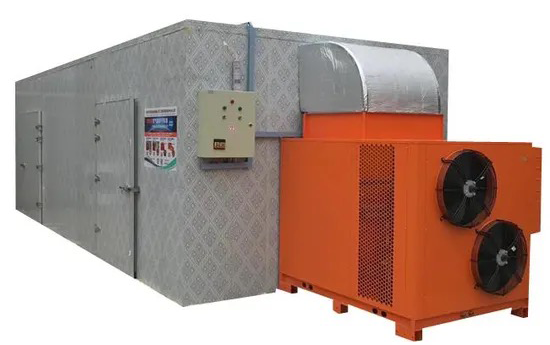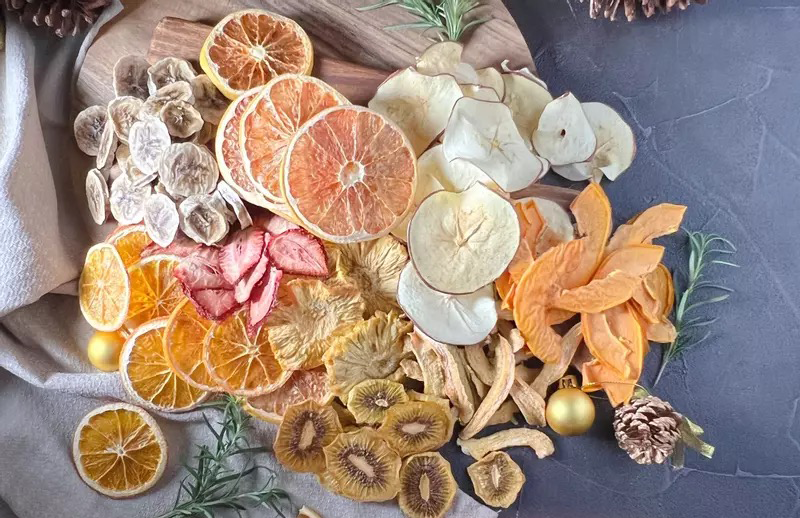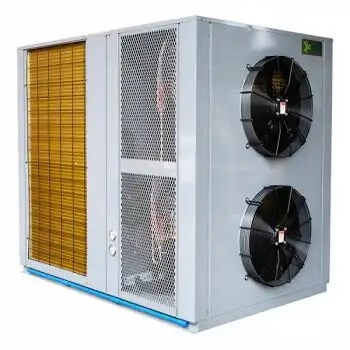
Content Menu
● Understanding Food Dehydrators
● Benefits of Using a Food Dehydrator
● Common Uses for a Food Dehydrator
● How to Use a Food Dehydrator
● Tips for Successful Dehydrating
● Exploring Creative Recipes
>> Dried Fruit Snacks
>> Vegetable Crisps
>> Homemade Jerky
>> Fruit Leather
>> Creative Uses Beyond Snacks
● Caring For Your Food Dehydrator
● Conclusion
● FAQ
>> 1. How long does it take to dehydrate food?
>> 2. Can I dehydrate cooked foods?
>> 3. What types of foods should not be dehydrated?
>> 4. How should I store my dried foods?
>> 5. Is it safe to dehydrate meat?
● Citations:
Food dehydrators are versatile kitchen appliances that allow you to preserve food by removing moisture, which helps prevent spoilage and enhances flavors. This article will explore various uses for food dehydrators, their benefits, and tips for maximizing their potential in your kitchen.

Understanding Food Dehydrators
A food dehydrator is designed to remove moisture from food items while preserving their nutritional value. The process involves circulating warm air around the food at low temperatures, typically between 85°F to 160°F. This method is efficient for drying various foods, including fruits, vegetables, meats, and herbs.
Dehydrators work by using a fan to circulate air at low temperatures, which helps maintain the nutrients and enzymes in the food while effectively removing moisture. This preservation technique not only extends the shelf life of foods but also intensifies their flavors.
Benefits of Using a Food Dehydrator
- Extended Shelf Life: Dehydrated foods can last for months or even years without refrigeration.
- Nutritional Preservation: Unlike canning or freezing, dehydrating retains more vitamins and minerals.
- Cost-Effective: Buying produce in bulk when it's in season and dehydrating it can save money.
- Reduced Food Waste: Dehydrators allow you to use surplus fruits and vegetables before they spoil.
- Healthy Snacking: Create nutritious snacks without additives or preservatives.
- Convenience: Dried foods are lightweight and easy to store, making them ideal for travel or emergency preparedness.
Common Uses for a Food Dehydrator
1. Drying Fruits
Dehydrators excel at drying fruits such as apples, bananas, mangoes, and berries. This process intensifies their natural sweetness and makes them great for snacks or baking.
2. Vegetable Preservation
Vegetables like tomatoes, peppers, and carrots can be dehydrated for later use in soups, stews, or as healthy snacks.
3. Making Jerky
One of the most popular uses for a dehydrator is making jerky from beef, turkey, or even fish. The dehydration process enhances flavor while ensuring safety through proper temperature control.
4. Herb Drying
Fresh herbs can be dried to enhance their flavor and aroma. This is particularly useful for gardeners looking to preserve their harvest.
5. Creating Fruit Leather
Pureed fruits can be spread on dehydrator trays to create homemade fruit leather—a healthy alternative to store-bought snacks.
6. Preparing Camping Meals
Dehydrated meals are lightweight and easy to pack for camping trips. You can dehydrate stews or pasta dishes that only require water to rehydrate.
7. Snack Foods
Kale chips, veggie crisps, and other healthy snacks can be easily made in a dehydrator.
8. Fermenting Foods
Some dehydrators can maintain low temperatures suitable for fermenting yogurt or culturing other foods.
9. Crafting Projects
Dried flowers and herbs can be used in crafts such as potpourri or homemade paper.
10. Dog Treats
You can make healthy dog treats by dehydrating meat or fruits specifically designed for canine consumption.
How to Use a Food Dehydrator
Using a food dehydrator effectively involves several steps:
- Preparation: Start with fresh ingredients that are clean and free from blemishes. Cut them into uniform pieces for even drying.
- Temperature Settings: Adjust the temperature according to the type of food being dried:
- Fruits: 135°F
- Vegetables: 125°F
- Herbs: 95°F
- Meats (after cooking): 130°F to 140°F
- Spacing: Arrange food items in a single layer on the trays without overlapping to ensure proper air circulation.
- Monitoring: Check periodically for doneness; drying times vary based on humidity levels and thickness of food slices.

Tips for Successful Dehydrating
- Use a fan-equipped dehydrator for more efficient drying.
- Consider using non-stick sheets when dehydrating liquids like fruit purees.
- Store dried foods in airtight containers in a cool, dark place to maximize shelf life.
- Experiment with different recipes to discover new favorites.
Exploring Creative Recipes
Using a food dehydrator opens up a world of culinary possibilities beyond simple fruit and vegetable drying. Here are some creative recipes you might consider:
Dried Fruit Snacks
Dried fruits are not only delicious but also make excellent snacks. Here's how you can prepare some popular options:
- Apple Chips: Slice apples thinly, sprinkle with cinnamon if desired, and dehydrate at 135°F for about 6–12 hours until crispy.
- Banana Chips: Thinly slice bananas and dehydrate at 135°F for approximately 10–12 hours until they reach your preferred texture—chewy or crispy.
- Mango Slices: Peel and slice mangoes into thin strips; dehydrate at 135°F for about 10–12 hours until leathery but not sticky.
Vegetable Crisps
Vegetable crisps are another fantastic use of your dehydrator:
- Kale Chips: Tear kale into bite-sized pieces, toss with olive oil and seasoning (like garlic powder), then dehydrate at 135°F for about 8–10 hours until crispy.
- Zucchini Chips: Slice zucchini thinly, season with salt or spices of your choice, and dehydrate at 125°F for about 6–8 hours until crisp.
Homemade Jerky
Making jerky at home allows you to control the ingredients:
- Beef Jerky: Marinate thinly sliced beef in your favorite marinade overnight. Drain excess marinade before placing the slices on trays; dehydrate at 160°F for about 4–6 hours until chewy but not brittle.
Fruit Leather
Fruit leather is an excellent way to use up excess fruit:
1. Blend fruits (like strawberries or apples) with a little lemon juice until smooth.
2. Spread the mixture evenly on a dehydrator tray lined with parchment paper.
3. Dehydrate at 135°F for about 6–8 hours until it's no longer sticky but still pliable.
4. Cut into strips and roll up in parchment paper for storage.
Creative Uses Beyond Snacks
Food dehydrators are not limited to just snacks; they can also be used creatively in meal preparation:
- Dehydrated Soups: Prepare your favorite soup recipe, then dehydrate it into powder form by spreading it out on trays. When ready to eat, simply rehydrate it with hot water.
- Herb Seasoning Blends: Dry fresh herbs like basil or oregano in your dehydrator; once dried, grind them into powders or mix them into seasoning blends.
Caring For Your Food Dehydrator
To ensure your food dehydrator lasts long and operates efficiently:
- Clean the trays after each use with warm soapy water; avoid immersing the heating element in water.
- Store your dehydrator in a dry place away from direct sunlight when not in use.
- Regularly inspect the appliance's components for any signs of wear or damage.
Conclusion
Food dehydrators offer an excellent way to preserve food while enhancing flavors and nutrition. Whether you're looking to create healthy snacks, reduce food waste, or prepare meals for outdoor adventures, a dehydrator is an invaluable tool in your kitchen arsenal. With various applications ranging from jerky making to crafting unique fruit leathers and vegetable crisps, the possibilities are endless!
By investing time in learning how to use this appliance effectively, you will reap numerous benefits including cost savings from bulk purchasing produce during peak seasons and contributing positively towards reducing food waste—an important consideration today more than ever!

FAQ
1. How long does it take to dehydrate food?
Dehydration times vary based on the type of food and thickness of slices but typically range from 4 to 12 hours depending on humidity levels and specific foods being dried.
2. Can I dehydrate cooked foods?
Yes! Cooked foods like stews or casseroles can be dehydrated; just ensure they are cooled before placing them in the dehydrator.
3. What types of foods should not be dehydrated?
Foods high in fat (like avocados) or those that contain high moisture content (like lettuce) do not dehydrate well due to their texture changes during the process.
4. How should I store my dried foods?
Store dried foods in airtight containers or vacuum-sealed bags placed in cool dark areas away from light exposure which could degrade quality over time.
5. Is it safe to dehydrate meat?
Absolutely! Just make sure you cook meat first until it reaches an internal temperature of at least $$165^\circ F$$ before dehydration—this ensures harmful bacteria are eliminated effectively while preserving flavor during drying stages!
Citations:
[1] https://www.webstaurantstore.com/guide/741/food-dehydrators-buying-guide.html
[2] https://www.goodhousekeeping.com/appliances/a31904157/what-is-a-dehydrator/
[3] https://www.mitchellcooper.co.uk/what-is-a-dehydrator-commercial-buying-guide
[4] https://www.callmelore.com/fool-proof-healthy-dehydrator-recipes/
[5] https://www.mitchellcooper.co.uk/10-alternative-uses-for-dehydrators
[6] https://www.bestbuy.com/discover-learn/10-reasons-to-buy-a-food-dehydrator/pcmcat1634332391134
[7] https://www.youtube.com/watch?v=lEUA2t2XD5M
[8] https://eatsleepwild.com/homemade-dehydrated-backpacking-meals/
[9] https://www.reddit.com/r/dehydrating/comments/106m6e4/what_are_things_you_commonly_eat_using_your/
[10] https://www.webmd.com/diet/dehydrating-food-good-for-you











